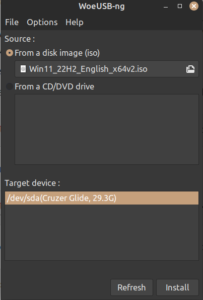I have been using open-source software for almost twenty-five years now. I was a user and an evangelist for open source for the first fifteen years that I used open source software. I didn’t see myself as a coder so how could I give back to the community. That changed in 2011 when I began writing for Opensource.com. I felt guilty that I didn’t do more to support the community.. I failed to realize that there is much more than coding and evangelizing that contributes to an open source community.
Here are some ways you can contribute to open source without being a community evangelist or a programmer. Documentation is one of the most important aspects of any project. It may not be intuitive how to use the software. Take WordPress and Drupal for example. It’s become easier now that you can spin up a virtual machine or a Docker image but there are still many nuances that are not intuitive and that is where good documentation plays an important role.
User testing is another way to contribute. How does the software operate on a variety of different platforms and operating systems. Providing feedback on usability and bugs. Community support by participating in forums and wikis by answering questions and provide support to other users. I have been a Linux user since the late 1990’s and in the early days before the World Wide Web existed the chief method of support was joining listservs and bulletin board. Now there are more resources for users but community support continues to be a great help even for experienced users.
Financial contributions help maintain and develop the project. One of the ways you can support open source is through the Github Secure Open Source Fund. I am a Linux Mint user and I have made regular contributions to the project. GnuCash is another project I contribute to. Consider contributing to podcasters like LateNight Linux. You can support Fosstodon and other Mastodon instances.
Advocacy is one of the principal ways I support open source. You can too. Advocate for the adoption of open-source solutions in organizations, educational institutions, and among peers. There are still many folks in communities around the globe that know nothing of open source and the benefits of using open source software. Thirty-three years after the advent of Linux a majority of the folks I come in contact with everyday have never used it nor do they understand the tremendouse personal and professional benefits they might enjoy as a user.
I advocated for the Chautauqua-Cattaraugus Library System to move away from a proprietary library system. The system adopted Koha which is supported by Bywater Solutions. The library system saved over $60,000 per year and were ready for the pandemic when libaries were forced to close their doors. Moving from an expensive client-server proprietary system to an open source one that needed only a FireFox browser to navigate was a game changer. I learned about Bywater and Koha from an open source using library director.
Consider sharing your open source experience by writing and sharing your journey with technology blogs like Allthingsopen.org. You might consider sharing your journey with others. Volunteer at meetups, workshops and hackathons and open source conferences. Offer others your open source journey at public libraries. There are many ways to give back.



 I enjoyed moving the turtle around the screen and drawing some simple shapes. The true potential of Turtle lies not merely in its capacity to execute commands but in its ability to foster procedural thinking and encourage students to reflect on their thought processes. With the aid of Turtle graphics, programming students can receive instant visual feedback from their code and simultaneously explore mathematical concepts, such as estimation and variability.
I enjoyed moving the turtle around the screen and drawing some simple shapes. The true potential of Turtle lies not merely in its capacity to execute commands but in its ability to foster procedural thinking and encourage students to reflect on their thought processes. With the aid of Turtle graphics, programming students can receive instant visual feedback from their code and simultaneously explore mathematical concepts, such as estimation and variability.
